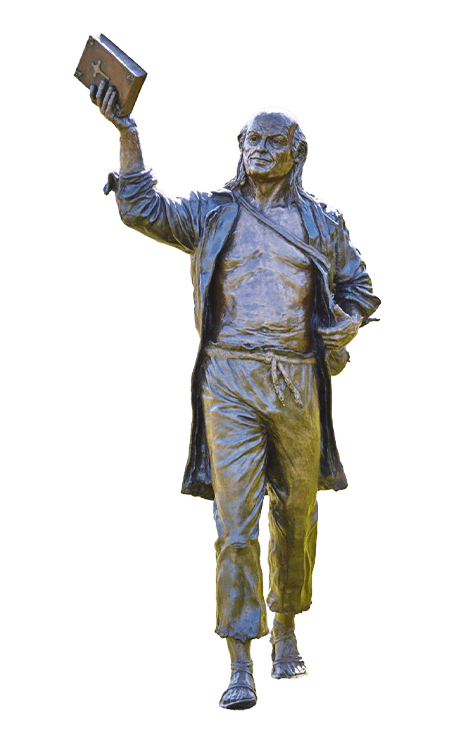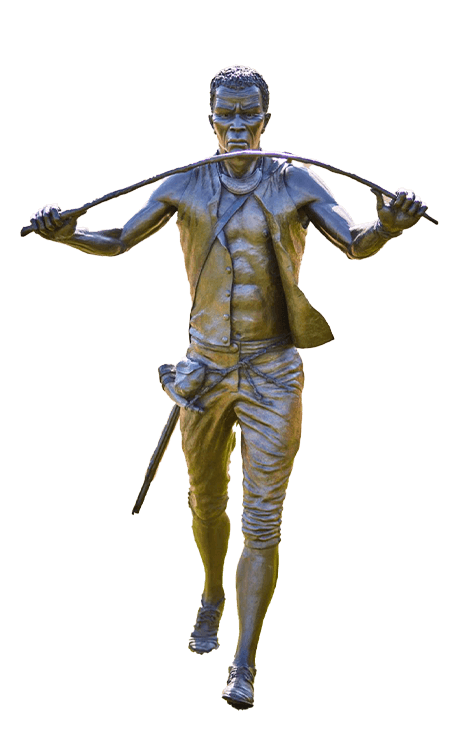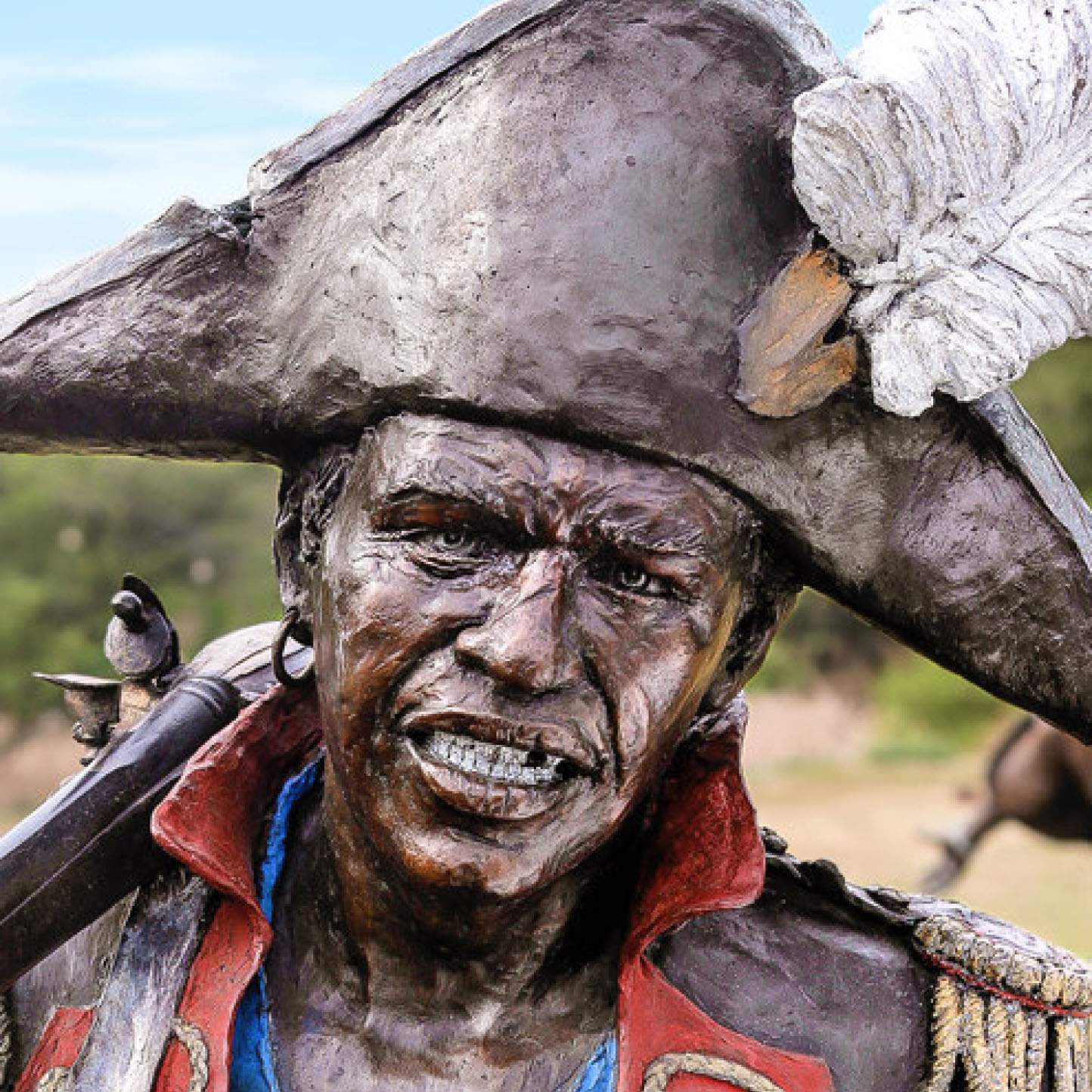
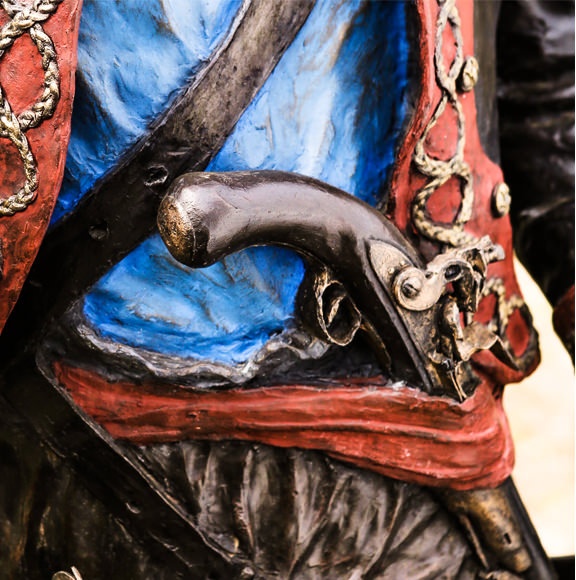
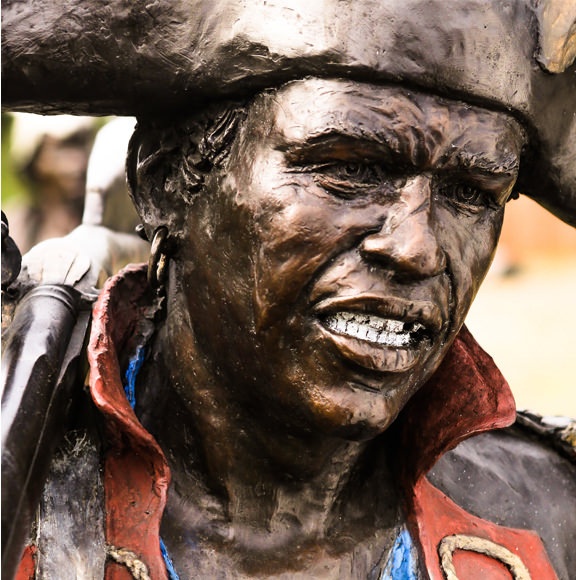
"Tomorrow when the bloody red flag of battle goes up and the fight for freedom is complete, you will be able to address your owners as Jij (you)."
Fellow leader Abraham van der Kemp during the Trial of the Rebellious Slaves, 1808
Louis Van Mauritius
1778 - 1808
Leader of the Jij Rebellion of Cape Slaves in 1808
Louis was named 'van Mauritius' after the island on which he was born. He arrived in the Cape in 1781 as a three year-old and was sold to a family at the Cape from a passing ship.
He received a basic education and was allowed to attend classes while he was young, but was expected to earn his keep and turn a profit for his owners by the age of 12.
Louis van Mauritius grew up in the brutal world of slavery. Crucifixions, dismemberment, burnings at the stake, impalement and drawing and quartering were some of the accepted forms of punishment for rebellion in the colonies during the 17th and 18th century. He was 'rented out' to his free wife for extra income affording him a measure of freedom of movement.
By the time Britain abolished the slave trade in 1807, Louis had heard about struggles for freedom in Ireland, France and Haiti and was inspired to lead over 300 slaves and Khoena (Khoi) servants in a march on Cape Town to demand their freedom.
Disguised as a Spanish sea captain, he was able, with fellow leaders, to convince farmers to release their slaves into the hands of the 'military' party.
News soon reached the Governor of the Cape, who ordered infantry and cavalry to lie in wait for the rebels at Salt River just outside the city. The participants were trapped and quickly scattered in the face of superior forces. The rebellion was over in two days.
The marchers were pursued, captured, interned, interrogated and 51 were put on trial. Four of the five leaders, including Louis van Mauritius, were sentenced to hang. He tried to escape but was caught by a bounty hunter, who returned him to the authorities.
It is thought Louis van Mauritius acquired his military jacket two years earlier, after the Battle of Blaauberg between the French-aligned Cape forces and the British in 1806. Uniforms of the dead were strewn on the battlefields of Blaauberg and some fell into the hands of slaves.
The death of Louis van Mauritius ended the life of a leader of hundreds of rural slaves who followed him at short notice in the hope of gaining their freedom in the early 1800s.
Slavery at the Cape continued until 1834 when the Slavery Abolition Bill passed by the British parliament in 1833 was enforced. To make them fit for freedom, the emancipated slaves were compelled to serve their previous masters as apprentices for four years.
About 39,000 slaves were freed on December 1st 1838, Emancipation Day, when slave apprenticeships were finally terminated.
